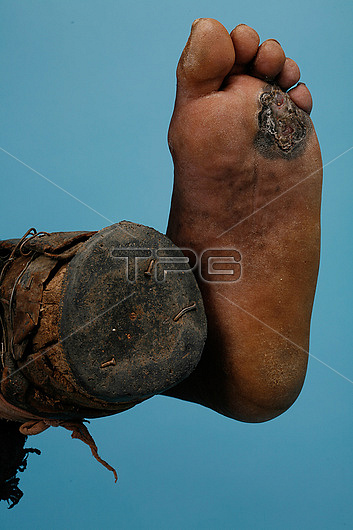
Mycetoma on the sole of the right foot of a patient. Mycetoma is an uncommon disease found in the tropics. It is a chronic, localised infection of the skin and underlying tissues characterised by the formation of several abscesses (collections of pus) and granulomas (collections of epithelioid histiocyte cells produced in an immunologic response to the pathogen). These cells are a specialised type of macrophage that engulf the particulate matter and attempted to digest it, but do not succeed. Failure to do so results in further production of epithelioid histiocyte cells. The causes of mycetoma can be bacterial or fungal. The bacteria responsible for the disease are known as actinomycetes (producing actinomycetoma), whilst the fungal form is known simply as eumycetoma. The two causes appear the same in specimens and can only be distinguished through analysing cell cultures. These agents reside in the soil in areas of low rainfall and enter the body via percutaneous implantation when the skin is broken. The hand, foot and knee are the most common areas of implantation as these are often exposed to the soil when working on it. The pathogens exist within the wound as granules - small aggregates of fungal or bacterial hyphae. The granules are surrounded by the specialised macrophages to produce a granuloma. As these cells die, pus is continually produced which slowly accumulates into an abscess, with the accompanying chronic inflammation destroying surrounding muscle, bone and fascia as it grows. These abscesses drain through the skin via sinus tracts, producing a fluid as seen here. Actinomycetoma responds to antibiotic treatment, but amputation is often the only option for eumycetoma.
| px | px | dpi | = | cm | x | cm | = | MB |
Details
Creative#:
TOP26664655
Source:
達志影像
Authorization Type:
RM
Release Information:
須由TPG 完整授權
Model Release:
Yes
Property Release:
No
Right to Privacy:
No
Same folder images:

 Loading
Loading